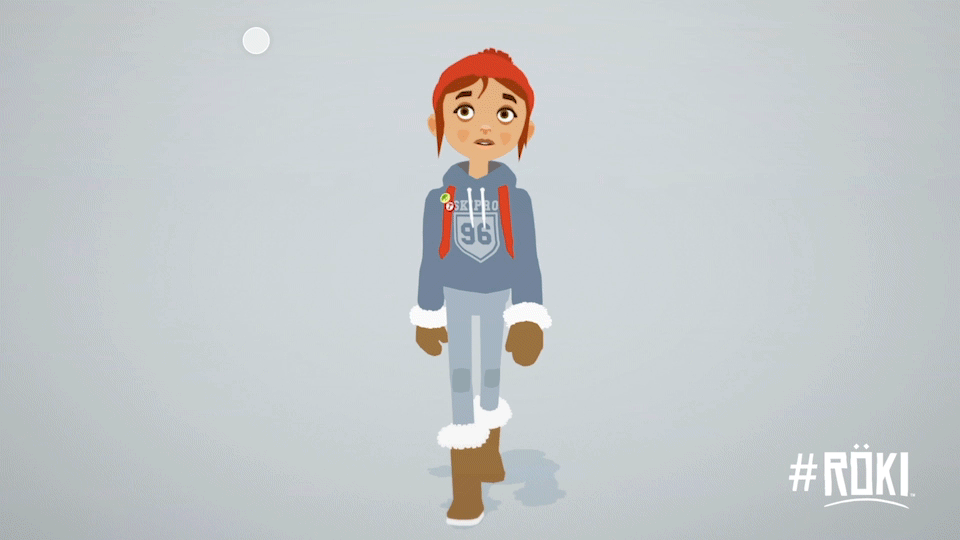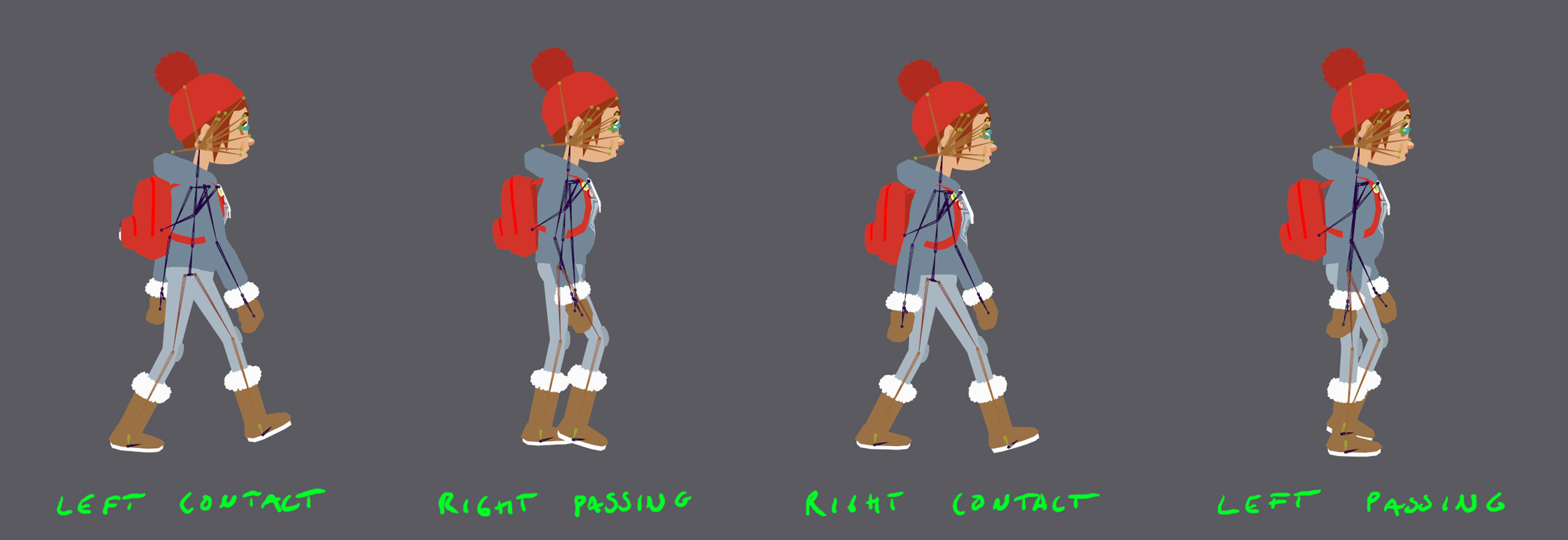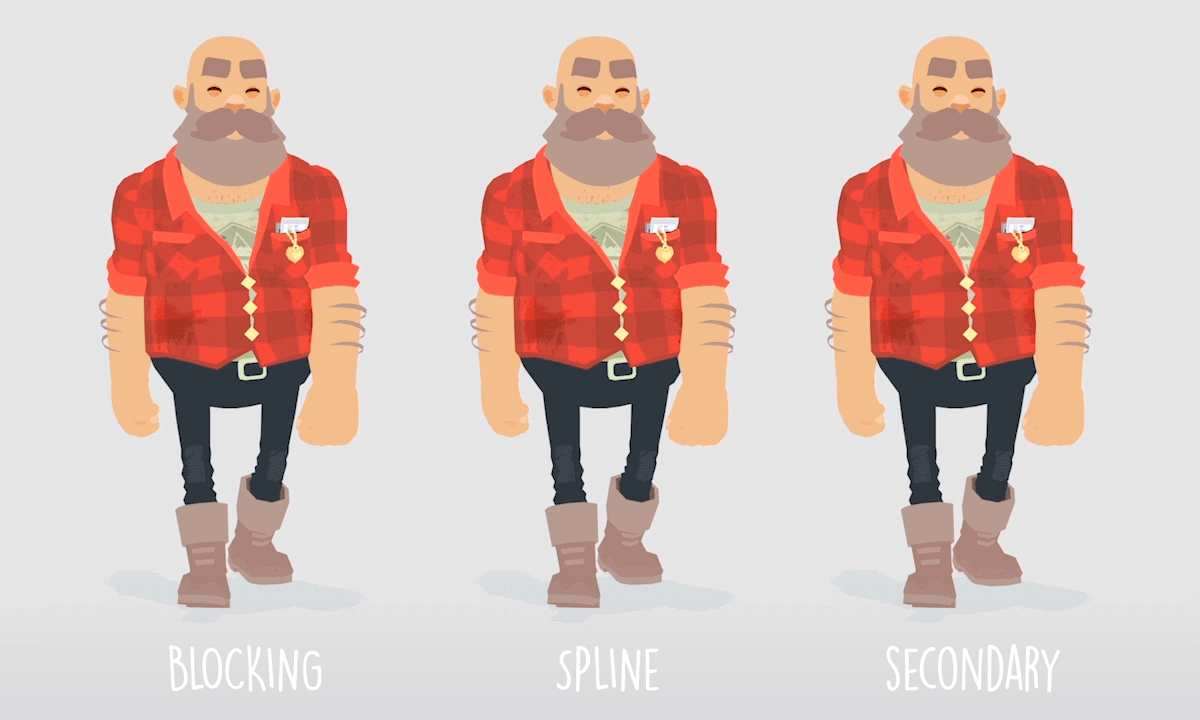Anatomy of a Walk Cycle - Part 1
I’ve been working up Lars’s locomotion animation set (walks and runs, basically anything that moves him about under his own steam). He’s been sharing his big sister’s animation for a while now so it was nice to create a set of moves just for him!
Whilst creating his new animations, I thought It would be good to do a quick blog breaking down some of the important parts of a walk cycle. A walk cycle is a nice animation task to examine because:-
You see it a lot, over and over again in fact, so it’s a good thing to lavish attention on
It’s a nice contained animation (time duration wise) to examine body mechanics
It’s often one of the first things people attempt when starting out, certainly it was for me.
So we’ll step through some of the key aspects (as far as I’m concerned) over the next few of weeks. It’s not going to be exhaustive, but an overview. I’m sure there are some things I’ll miss but hey, nobody’s perfect right! Today, we’re mostly gonna be looking at the key poses and the role of the hips.
Key Poses (Contact Poses & Passing Poses)
As the top level there are four key poses in a walk cycle. There are as follows:-
Left Foot Contact Pose - Left foot forward & right foot back. Right arm forward & left arm back (opposing legs)
Right Foot Passing Pose - Right foot passes the standing left foot as it moves forward
Right Foot Contact Pose - Left foot forward & right foot back. Right arm forward & left arm back (opposing legs)
Left Foot Passing Pose - Right foot passes the standing left foot as it moves forward
You can see these base poses below in Tove’s walk cycle.
Transferal of Weight
When a human walks they are constantly falling forward but are catching themselves with each step. With each step the weight of the body transfers from one foot to the other. This frees the other foot to move forward, unencumbered by the need to bear the body’s weight. The ‘free‘ foot will then make contact with the floor as the next step is made and the weight of the body will begin to transfer to this foot subsequently freeing the other foot from supporting the body so it can make its step forward.
This transferal of weight is critical to creating a convincing walk cycle.
How does this transfer of weight make itself know in the key poses? Well there are two key elements, both concern the hips of the character.
The Hips’s Side-To-Side motion & Center of Gravity
When the weight of the body is on a particular foot the hips will move over to that side to balance the body’s center of gravity. Without this movement you’d simply fall over. It’s something we do without thinking, try standing on one leg and see what happens to your hips. They move over to the standing leg right, that’s what we’re talking about.
This side-to-side motion produces the ‘sway‘ you see when people walk.
The side-to-side movement of the hips from the center line
Hip Rotation
One common mistake when people attempt their first walk cycles is to ignore the rotation of the hips. There are two important hip rotations to be aware of:-
Yaw rotation of the hips
Roll rotation of the hips
For the hip’s yaw rotation the important consideration is the your legs do not flip-flap on the end of static hips they are a unit! If you stand up and approximate a contact key pose (one leg forward, the other back) you will notice that your hips are not straight, they will have twisted to extend your stride and the reach of your foot. Not utilising the yaw rotation of the hips means your character will be taking tiny steps (as their stride will be reduced) and it will look very mechanical, as the legs and hips are not working together as a unit.
The hip’s YAW rotation
The hip’s roll rotation also play an important role in the walk cycle, specifically to do with the transfer of weight.
When standing on a single leg the hips/pelvis will roll up on that side as the full weight of the body is taken. Animation wise this is a great way to sell the transfer of weight in you animations and give a clear indication when the weight is passes and the hips roll one way and then the other.
It’s also important to note that this hip movement can be adjusted for the weight of your characters. If you character is heavier (like Henrik) then this transfer might be more sudden and less smooth then for a lighter character. In fact this motion is a great way to sell a heavier character.
We’re out of time for this week. I’ve still got plenty more walk cycle stuff to bang on about so we’ll reconvene next week to dig in further.
Cheers,
Alex & Team Röki








